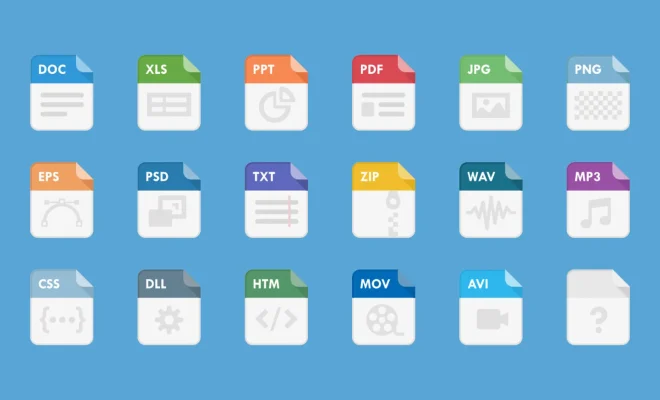What Is a File Extension?

As computers have become more prevalent and ubiquitous in our daily lives, the concept of a file extension has also become more important. But what exactly is a file extension and why is it so crucial to the functioning of computers and digital devices?
Essentially, a file extension is a series of letters or numbers that appear at the end of a file name, after a period or dot. For example, a Microsoft Word document might be named “Report.docx”, with the “.docx” portion of the name indicating that it is a Word file. Similarly, an image file might be named “Beach.jpg”, with the “.jpg” indicating that it is a JPEG image file.
The purpose of the file extension is to identify the type of file and to help computers and programs understand how to read and manipulate that file. Different file types require different software and tools to open and edit, and the file extension provides a quick and easy way to identify what software is needed.
For example, if someone sends you an email attachment named “Proposal.pdf”, you know that it is a PDF file and can quickly open it with the appropriate software, such as Adobe Reader. If the file extension weren’t included in the file name, you might have to do some guesswork or trial and error to determine how to view the file.
In addition to helping identify file types, file extensions also play a role in determining how files are handled by computers and digital devices. For example, certain file extensions might be associated with a specific program, which means that when you double-click the file, it automatically opens in that program. Other file extensions might be restricted by certain security settings or might trigger specific actions, such as running a script or opening a web page.
It’s worth noting that file extensions are not always visible by default on computers and digital devices. In some cases, file extensions might be hidden or obscured, which can make it more difficult to identify and manage files. However, most operating systems and programs offer the ability to view file extensions, either through a settings menu or by enabling a “show file extensions” option.
Overall, file extensions are a crucial aspect of digital file management and can help ensure that files are correctly identified and processed by computers and programs. By understanding what file extensions are and how they work, you can become more adept at handling, sharing, and managing digital files, whether you’re working on a personal computer or a business network.




